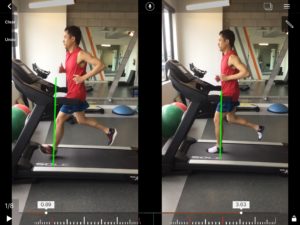
As many of the Elevation Physio team are runners themselves, we are excited to share essential insights to help you enhance your performance and reduce the risk of running injury. Whether you’re training for a marathon or simply enjoying a leisurely jog, understanding the intricacies of running mechanics is crucial for reaching your goals. Here, we discuss common advice for runners, covering everything from strengthening hip abductors to optimizing foot strike patterns. Our aim is to empower you with practical strategies to maintain a strong, injury-free body while pursuing your passion for running. Let’s explore fundamental tips that can help you stay healthy and enjoy every step of your running journey!
1. Strengthen Your Hip Abductors
Our hip abductors can be some of the weakest muscles in the body simply because they’re not often intentionally strengthened. We have performed enough running gait analyses to know that the act of running itself is not sufficient to strengthen these muscles. When skating, hockey players push off at a diagonal, football players run in different directions; however, runners move generally in only one plane: forward.
Since runners generally dislike strength training and working out in gyms (which is why we are runners – we love being outdoors), a runner’s hip abductors are often neglected. For runners, weak hip abductors can cause a whole host of problems from back and knee pain to shin splints and plantar fasciitis. This is one group of muscles which runners cannot afford to neglect.

2. Run Quietly (or Strike Softly)
There is a lot of discussion in the running and research world regarding foot strike patterns. Generally speaking, there are advantages and disadvantages to all three (fore, mid and heel) and a runner would do well to utilize them all – especially when trail running or to alter impact when feeling tight or fatigued during a long run. It is possible for runners to learn to run quietly or to land softly and the advantages of doing so far outweigh a hard foot strike. Regardless of the types of shoes or strike pattern you choose, learn to run softly. Running barefoot is a good way to train!
3. Don’t Over-Stride!
It is generally agreed that there is no advantage to striking the ground ahead of your knees for a prolonged period of time. Reasons include a greater vertical displacement (up and down bobbing motion), increased impact reaction forces on your joints, and poorer running economy. Strategies to reduce over-striding include increasing your step rate (cadence) or simply shortening your stride and to land softly. During running gait analysis, over-striders often revert to a much better gait when running barefoot. Runners are then encouraged to mimic a barefoot stride and cadence when running in their shoes.

4. Strength Train Your Whole Body
Not just your hips and lower body but your upper body as well. The benefits of strength training for runners is overwhelmingly positive, not just for injury prevention but for running performance. If runners cannot tolerate being in a gym or do not have access, there are a plethora of effective upper body workouts you can do at home. A gym membership, though helpful, is not necessary.

5. Recover Well
Sleep, foam rolling, nutrition, easy training days, cross training are all ways to help runners recover. Runners generally invest a lot of time, energy, resources and thought into training but very little intentionality is built into recovery. A well-recovered athlete is a consistent and productive athlete.

6. Prevent Problems Before They Happen
Rarely do we ever see patients seeking advice to prevent injuries. Usually, we see patients five days before an all-important race seeking a miracle cure. Runners would do well to seek the advice of a physiotherapist months BEFORE an important race or before starting a new running program. This will give you an opportunity to discuss your goals, as well as receive a full physical assessment and a personalized conditioning, performance and running injury prevention program. The biggest risk factor for a future injury is an unresolved past injury. Take care of small problems early so that they do not morph into bigger ones.
7. Enjoy It!
There are many reasons why people pick up running, with weight loss being one of the largest motivators by far. But if you don’t enjoy running, don’t do it. Life is too short to invest time, money and energy into an exercise you don’t like, as chances are slim you will stick with it. Runners run because it invigorates them. Find activities among the myriad of other options available that challenge your cardiovascular system for at least 150 minutes a week. If you are having fun, it won’t feel like exercise at all.
Ready to take your running to the next level? Don’t hesitate to reach out for a personalized running assessment, where we can help you identify areas for improvement and optimize your performance!
Submitted by Albert and Karen Chan
